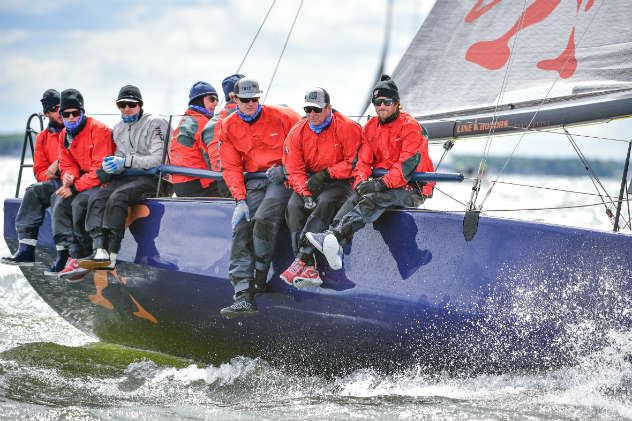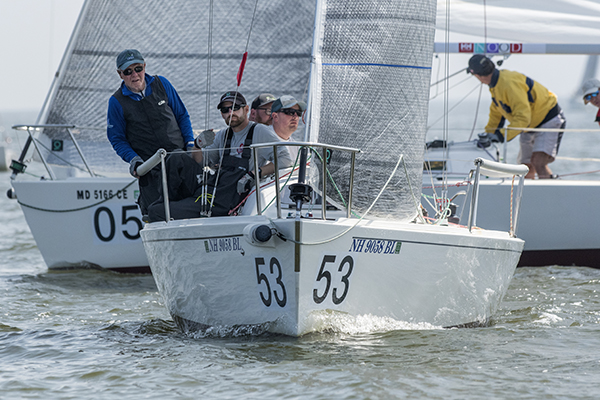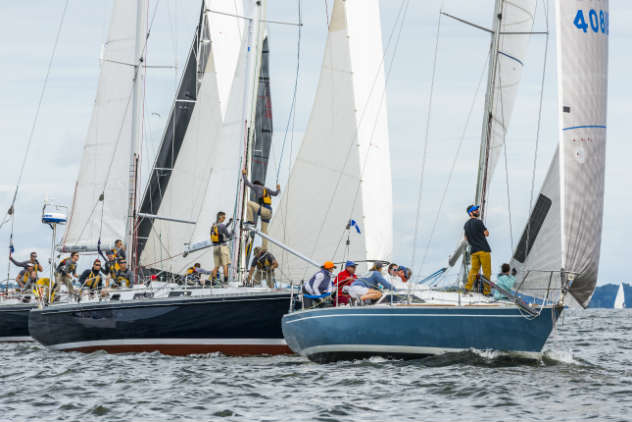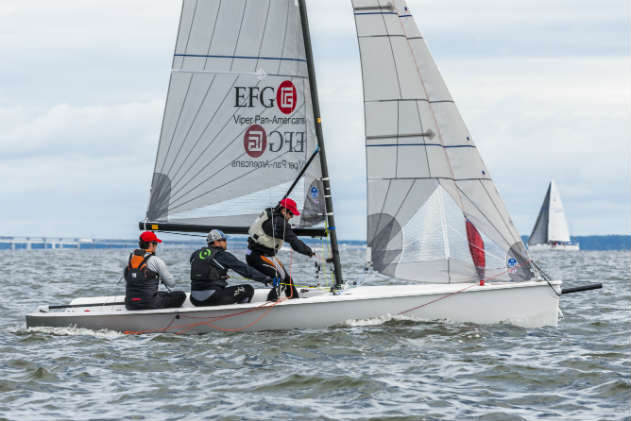Quantum Sail Design Group's David Flynn takes a look at the Zen of becoming the ultimate sailing crew to answer the eternal question: How do I become a better crew so I can get on good boats?

What weight means:
Where the crew positions itself is a huge component of boat speed on every point of sail. Consider this: an increase of one percent in boat speed, from 6.0 to 6.1 knots, would equal two minutes over the course of a normal two-hour race, two minutes 24 seconds at five knots.
Moving a single body of average weight to the rail, when sailing with the keel loaded (wind forward of 120 degrees apparent), increases boat speed on your average racer/cruiser 30-40 footer a tenth of a knot. Similar gains can be made by adding heel or moving weight forward in light air. Get the picture?
If crew members always have their weight in the right place, you could be as much as 10 minutes faster over the course of a two-hour race. It takes effort and concentration. Bring a full crew. Hike like you mean it. If the whole crew simply hikes harder, which means moving outboard six inches, it will make the boat a tenth of a knot faster upwind. Remember, sailing is a sport; no pain, no gain.

Where should I be?
The magic spot varies depending on wind velocity, boat speed, sea state, design characteristics of the boat, and the needs of the helmsperson.
It also reflects the design characteristics of the boat. Most racer/cruisers ride high in the bow, low in the stern, so they always need the weight well forward, (though usually not forward of the shrouds). This means stay out of the cockpit!
Think in terms of a diagonal line running from the leeward shrouds to the weather rail at the back end of the cabin top. In light air weight should be forward and to leeward. As the breeze builds, weight should shift aft and to weather. Upwind, the crew should react automatically to puffs and lulls, and the needs of the helmsperson for more or less heel. Create heel in light spots, out of tacks, or in waves.

Help the helmsperson.
The steering groove is wider and the boat has more “feel” when it heels over. The driver should communicate need for heel to the crew. The driver should attempt to sail the boat flat or with as little heel as they can stand, and still keep the boat in the groove. Once you get the boat going, move weight up. Speed first, then weight up. The boat will get a mushy, almost slow feeling just as it really gets hooked up.
As the driver starts to lose it and slow down (or if a set of waves or a light spot is coming), he or she should ask for more heel. The crew should anticipate and try to feel the boat. A well-trained crew will react to changes in velocity or boat speed automatically; moving forward and to leeward as the breeze dies or the boat slows and back up to weather when the boat heels over in a puff, or the driver gets it dialed up.
Downwind, keep the weight well forward. Heel slightly to leeward in the light spots, and heel slightly to weather (five to eight degrees) when the boat is going well. In heavy air the weight can slide aft somewhat, but there is no need to get carried away with this. The bow is plenty full enough to keep the boat from turning into a submarine on most racer/cruisers.
This part is painful, but in light, sloppy conditions, upwind and down, it is faster (dramatically) to have the majority of the crew below, with their weight forward and to leeward. The crap shoot nature of light air sailboat races actually makes this a good deal. Who wants to watch anyway? Besides, it is much more comfortable. Bring the paper, and you can have lunch.

Movement kills speed!
While you need to get your responsibilities taken care of, remember that every time your weight is out of place, you are slowing the boat down. Think through your tasks so that you can accomplish them with the minimum amount of movement and wasted motion.
Many times a job can be done from the rail. For example, in breezy conditions, the pit person doesn’t have to move into the companionway, but can tail halyards and topping lift from the weather rail.
Above all, movement kills speed. If you can get your job done and then freeze in the right spot for the conditions, you will help make the boat go fast. In a perfect world, the crew would be frozen in proper position, explode in one burst of concentrated action to perform the required evolution (set, gybe, or douse), and then immediately settle down and freeze.
It is essential to settle the boat down after any evolution. In sailboat racing, as in life, balance is everything.
Questions? Email [email protected]




